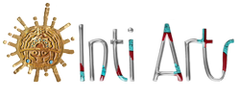- Home
- Wisdom & Traditions
Wisdom & Traditions
Dreamcatcher
In some Native American cultures, a dreamcatcher (or dream catcher; Lakota: iháŋbla gmunka, Ojibwe: asabikeshiinh, the inanimate form of the word for "spider"[1][2] or Ojibwe: bawaajige nagwaagan meaning "dream snare"[2]) is a handmade object based on a willow hoop, on which is woven a loose net or web. The dreamcatcher is then decorated with sacred items such as feathers and beads.
Origen
originated with the Ojibwe people and were later adopted by some neighboring nations through intermarriage and trade. It wasn't until the Pan-Indian Movement of the 1960s and 1970s that they were adopted by Native Americans of a number of different nations. Some consider the dreamcatcher a symbol of unity among the various Indian Nations, and a general symbol of identification with Native American or First Nations cultures. However, many other Native Americans have come to see dreamcatchers as over-commercialized, offensively misappropriated and misused by non-Natives.[3]
The Ojibwe people have an ancient legend about the origin of the dreamcatcher. Storytellers speak of the Spider Woman, known as Asibikaashi; she took care of the children and the people on the land. Eventually, the Ojibwe Nation spread to the corners of North America and it became difficult for Asibikaashi to reach all the children. So the mothers and grandmothers would weave magical webs for the children, using willow hoops and sinew, or cordage made from plants. The dreamcatchers would filter out all bad dreams and only allow good thoughts to enter our mind. Once the sun rises, all bad dreams just disappear.[4] American ethnographer Frances Densmore writes in her book Chippewa Customs
 Loading... Please wait...
Loading... Please wait...
